Difference between Surge Arrester, Lightning Arrester and Lightning Rod:
Surge arrester is used to protect the circuit or electrical equipment from high voltage transient or electrical surges. Lightening causes 1000kV + Voltages rises on the power line. It may damage the electrical equipment. In order to avoid this, the surge arresters are normally used.
Lightning arrester works like surge arrester from outside of the conductor. They absorb the electrical surges in the transmission tower itself.
Lightning rod is a pre protection device. Which absorb the lightning before fall in to the transmission line.
Surge arrester:
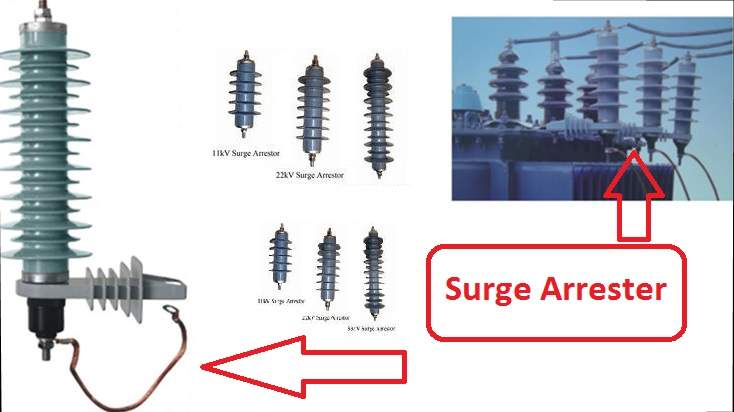
- Surge arrester participate inside of the power line. Which means the surge arrester will be installed in the transmission line, the total power system phase voltage is directly applied across the surge arrester.
- The surge arrester will be installed nearer to the equipment to be protected and the transmission tower line enter in to the substation point. In the diagram has shown the surge arrester has installed near to the transformer.
- It protects against high voltage transient (example: lightning strike on the transmission conductor) typically, it is indirect protection of lightning strikes.
- It should be installed each phase of the circuit. i.e if you have 2 parallel switch yard then you should install 6 number of lighting arrester (first run 3 phase and second run 3 phase) .
- Surge arrester are very costlier device.
- Surge arrester protects the power system, even the system voltage is high without lightning strike.
- It is just works under principle of varister. Varister is nothing but s voltage dependent resister whose resistance will be varied when the voltage changes across it. For small equipment it is named as MOV (metal oxide varister)
- The number of operating time can be counted
Note: Guys Do not confuse between the lightning rod and lightning arrester.
[wp_ad_camp_5]
Lighting arrester:
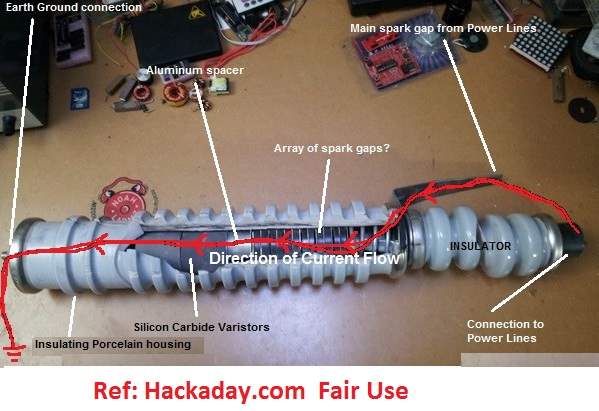
Lighting arrester is used to suppress the high transient voltage, isolation arc, electrical surge currents from spark and lightning currents from lightning strikes.
- The lighting arrester is doing the exact duty of surge arrester from outside of the conductor.
- The lightning arrester does not have any contact with the power line conductor.
- They will be installed in the transmission tower.
- They are attached with the insulator or separately placed nearer to the conductor and the end terminal is connected with the ground.
- Refer the figure that the current flow path during the lightning strike on the conductor.
Lightning arrester replacement on 220kV:
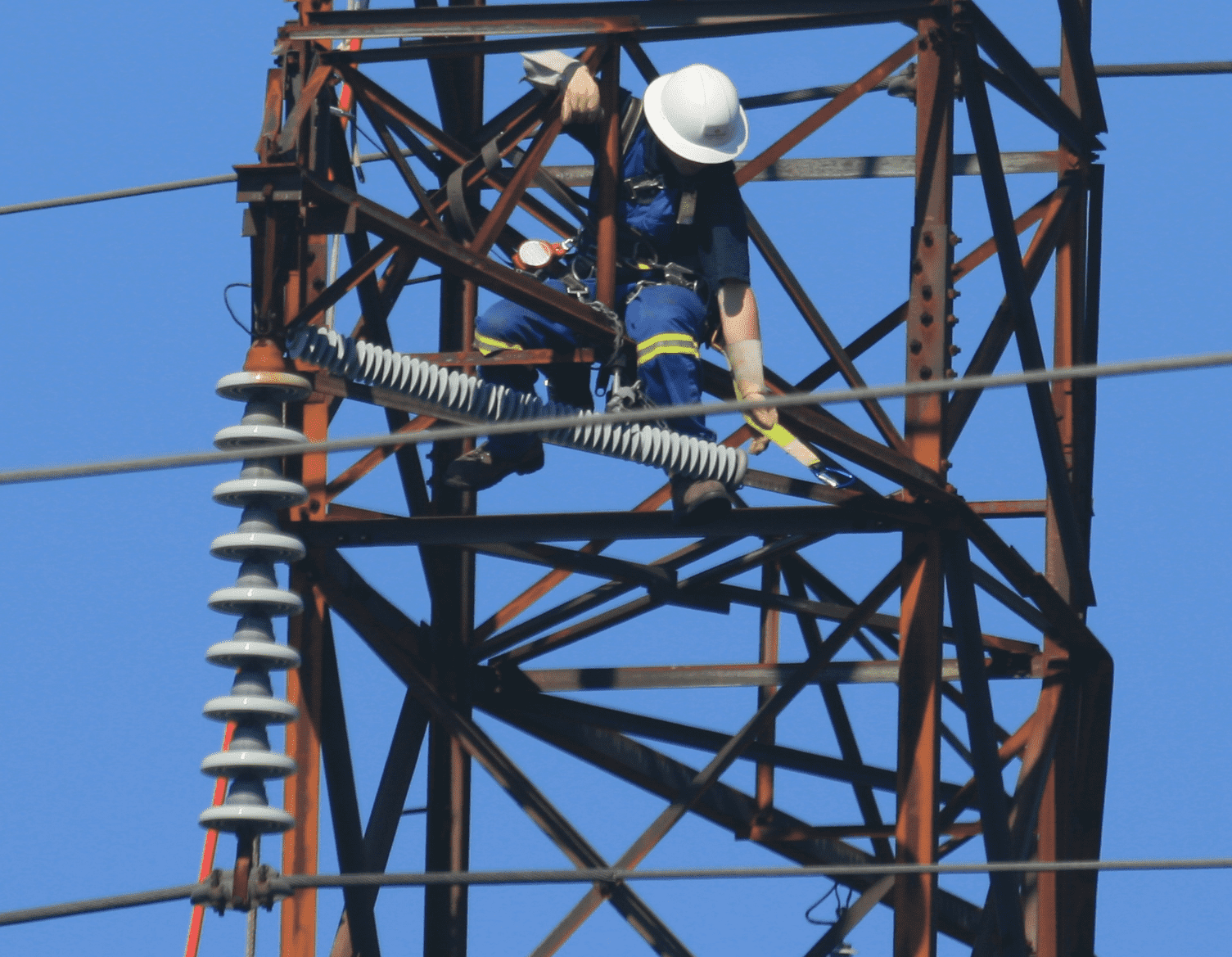
Purpose of lightning Rod:
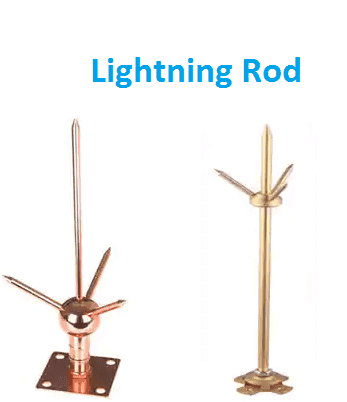
[wp_ad_camp_5]
Lighting is nothing but a sudden electrostatic discharge between the cloud and earth. If, they fall on the transmission lines means the system voltage might be elevated to dangerous voltage level. Hence these lightning strike should be avoided falling on the transmission line. To protect the electrical equipment from lighting (before falling on to the transmission line), the lightning rods are used.
- Lightning rods are installed on the highest point on the structure typically top floor on the building, top end of the transmission tower, top of the chimney etc.
- It protects the equipment from the direct lightning strikes.
- They capture the lightning charges and connect it with the ground.
- The lightning rods are made up of with the copper bus bar or conductor which laid from the top of the structure to bottom of the ground. The bottom end of the lightning conductor should be earthen to flow the lightning current. You must see the earthing procedure here.
- Very less cost as compare with surge arrester.
- Lightning rod must be divided for at the top end to absorb the high lightning current.
The above points may help you to identify Difference between Surge Arrester, Lightning Arrester and Lightning Rod
Also see:
- Why 60 Watts incandescent Bulb Glow in Yellow color
- Why Aluminium and Copper Vessels & Pot not Used in Induction Stove
- Why Are Alternators Rating in KVA or MVA
- Why Battery Cannot Store AC voltage
- Why Capacitor and Inductor are used in Filtering Circuit
- Why Capacitors Use As High Voltage Protection
- Why Carbon brushes are selected, How to Select Good carbon brushes
- Why CT secondary should not Open condition- Live Test Demo
- Why DC Voltage is preferred for Control circuit?
- Why Does Bird Not Get Shock on Transmission lines?
- Why Earth Pin is Plastic Thicker and Longer
- Why Earthing Transformer are used
- Why in India 11kV, 22kV, 33kV, 66kV, 132kV…
- Why India has 50 Hz Power System and US has 60 Hz 110 Volts Power System
- Why induction motor Takes high starting current
- Why Inductors Use In Filtering Circuit and VFDs
- Why is Battery United AmpsHour AH
- Why Lighting Transformer Used for Lighting Loads
- Why line chokes are used in VFD
- Why Permanent magnet generator (PMG) poles are high
- Why PT and CT Terminals are Star Connected
- Why Slip ring Induction motor is preferred for High starting Torque application
- Why Star delta starters are preferred for higher HP motor
- Why Tertiary Winding is used in transformer?
- Why transformer Rating in KVA exact answer
- Why VFD duty motor Frame size come in higher size
- Why we should not give dc supply to Transformer
- Why Zig-Zag Winding Transformer Used
- Purpose of Chokes in Tube Light
- Purpose of Unit Auxiliary Transformer (UAT)
- Rate Of Change Of Frequency (ROCOF) Protection df/dt Working Principle
- Reason For Transformer Core Saturation
- Relationship Between Work, Energy and Power
- Relay Codes for all Relay From 1 to 150 Numbers
- Resistance split-phase motor induction motor
- Restricted Earth fault Protection 64R
- Reverse Power Protection Working Principle -32R
- Rotating Diode Failure Relay Working Principle
- SF6 Circuit Breaker Nameplate Details Explanation
- Types of insulation class motor winding Technology
- Under Frequency Protection Working Principle – 87U
- Under Voltage Protection Working Principle 27
- Unit Auxiliary Transformer (UAT) Differential Protection 87UAT

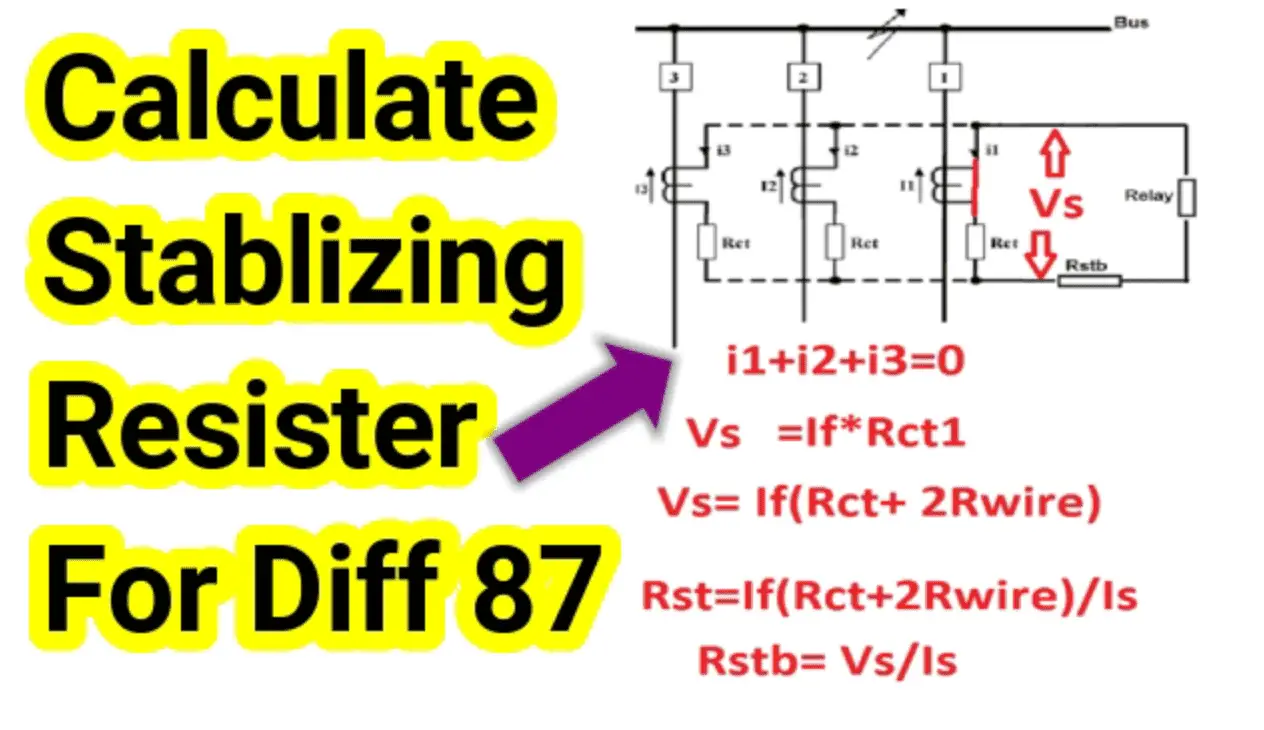
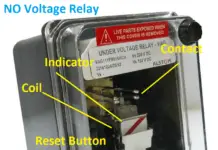
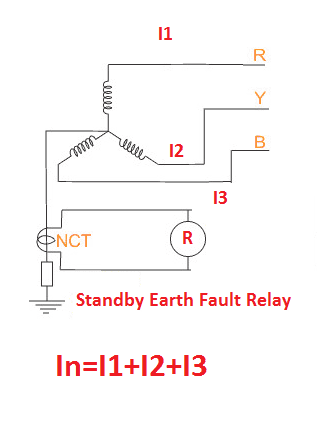

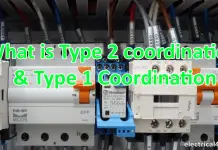

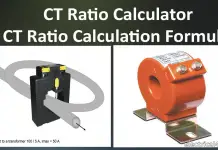

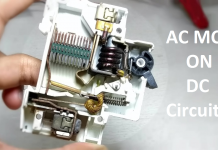
![What is Arc Chute? Types, Working Principle [Video Included] arc chute working priciple](https://electrical4u.net/wp-content/uploads/2020/06/arc-chute-218x150.png)